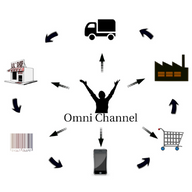
Powering your tomorrow

Retail
391 week ago — 7 min read
The development of the retail sector has been overwhelming. According to a recent India Brand Equity Foundation report, the industry is expected to grow to USD 1.3 trillion by 2020, registering a CAGR of 9.7 percent. This tremendous growth not only showcases the potential of the sector but also poses a challenge to the players to remain relevant and innovative. Companies are encouraged to put their best foot forward to gain an edge over competition for market share. While devising marketing plans, in-depth research and innovative strategies, organisations have simultaneously recognised the importance of nurturing their workforce as it plays a key role in an organisation’s success. No matter how good the strategy, its successful implementation hinges on the people.
The National Skill Development Corporation (NSDC) estimates that by 2020, India will need around 56 million people in India’s booming retail sector. A majority of employees in this business are customer facing and therefore play a critical role in contributing to the company’s success. Collectively, they define an organisation’s outlook to the world, represent the culture and shape the organisation’s reputation.
People power businesses
Studies indicate that employee engagement has resulted in customer satisfaction that has in-turn positively impacted the company’s profits. Employees are now being recognised as invaluable assets to a company and emphasis has been laid on attracting and maintaining the right talent. To drive a company’s vision and mission, it is imperative that its people understand these values and reiterate them in their actions and outcomes.
Setting up the right people practices is also essential to not only attract but also nurture and grow talent within an organisation. Engaging formats and innovative practices help an organisation leverage the capabilities of its people to augment its business practices.
This is particularly important in the beauty and wellness business as the sector is currently largely unorganised. Companies in this space need to analyse the current market and address the employee’s need for training and skill development, which will help build a strong and robust workforce. While there are several initiatives that can help address this concern, some of the key initiatives include in-house training, on–the-job training, industrial visits, counselling seminars by expert professionals and interactive workshops.
Companies like Kaya that have realised the correlation between employee satisfaction and business success, are investing in training their workforce about various sophisticated technological tools to improve employee performance. Some companies are also sponsoring their employees for further education, skill development programmes and industry conferences. Well-designed training modules help employees to be future ready, competitive and equipped with the correct problem-solving attitude.
Technology to your advantage
Brands are realising the role that technology and employees play in connecting the various stakeholder communities together. Technology is bridging gaps between employees and customers; and social media is a good example that demonstrates this equation. Companies can also use technology for improving their employee practices. With the help of technology, recruitment processes are simplified as it helps source the right talent mix through in-depth evaluations. It also helps in training, skill development and identifying gaps for enriching the workforce.
Technology is therefore playing a key role not just in enhancing products and services but also in empowering the workforce. However, for the service sector where customer experiences drive business, it is important to have a balance between technology and service delivery through human interface.
New rules of engagement
Employee engagement is another contributory factor that helps build a network that is mutually supportive and promotes healthy stakeholder relationships. It promotes a sense of belonging within the employees and helps retain them in the future.
Fostering a fair work-environment that safeguards the employees and promotes equality, helps them feel motivated. It promotes employee satisfactions that reflects in their performance and drives customer experience. For instance, we at Kaya have multiple communication forums which connect the management teams with the employees and ensures a two-way flow of communication. Business conference and off-sites are a few examples of engagement practices which enables the management to connect with each and every person across the organisation to come together and connect the management. The members share their ideas and understand the company vision. To cater to the young and diverse workforce, free counselling services can be provided to help, guide and motivate them. This contributes to employees’ confidence and improves their performance.
Additionally, the HR teams work towards helping members unwind through team bonding outings, hobby classes, games, grooming sessions, excursions or just simple get-togethers.
Remuneration and designations are key determinants in the longevity of an employee but there are several factors that contribute towards the aspirational value perceived by existing and potential employees in brands. Achieving synergy between the brand values and perception with strategic internal frameworks helps a company to build on its people quotient and potential.
People, above all
As we move towards an increasingly complex world and market dynamics, we need to remember one thing: While technology can solve business problems, employees are the ones to identify future challenges and design the right solutions. Developing technology alone does not yield the desired results without proper employee intervention. This is how employees add value to the various technological offering that a company provides. For an industry like retail that emphasises on a one-on-one customer interface, a focused workforce can leverage technology to deliver tangible results.
Brands are increasingly realising the importance of building a strong workforce to be future ready as they have the potential to identify opportunities and align their capabilities to deliver quality results for customers.
Article source: STOrai Magazine
Disclaimer: The views and opinions expressed in this article are those of the author and do not necessarily reflect the views, official policy or position of GlobalLinker.
View STOrai 's profile
Most read this week
Trending













Comments
Please login or Register to join the discussion